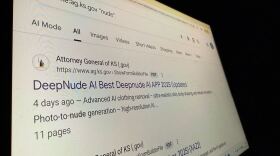The federal government will list the lesser prairie chicken as threatened in Kansas and neighboring states, triggering protections under federal law starting next year.
A smaller, isolated population of the same grouse species in part of Texas and New Mexico will be listed as endangered and receive stricter protection.
The U.S. Fish and Wildlife Service made the announcement Thursday. The development was expected because the agency made its proposal last year and gave the public two months to comment.
The federal government will allow flexibility for Kansas farmers who harm the birds in the course of routine activities, such as accidentally running over a bird’s nest (they nest on the ground).
But those exceptions wouldn’t apply to land that hadn’t been cultivated before. Ranchers also get flexibility to conduct routine work, including burning the prairie periodically, which is critical both to ranching and to saving prairie chickens.
This is the latest chapter in a decades-long history of conservation efforts and political fighting over the fate of a species hit hard by ranchland overgrazing and human development.
Hunting was already off the table in every state. Kansas hasn’t allowed lesser prairie chicken hunting since 2014, the federal agency says, and other states stopped it years or decades earlier.
The federal government listed the species as threatened in 2014, which led to a successful court battle spearheaded by the oil and gas industry. The bird quickly lost its special protection in 2016.
Wind power companies, the oil and gas industry, farmers and ranchers have argued against federal intervention to save the bird.
Republican members of the Kansas congressional delegation condemned Thursday’s announcement.
U.S. Sens. Jerry Moran and Roger Marshall issued a joint press release with U.S. Rep. Tracey Mann complaining of what they see as burdensome regulations on the agriculture and energy industries.
Marshall accused the Biden administration of micromanaging industries and said its move would “hurt our state’s economy, hinder our oil and gas independence, increase utility costs, and prevent the development of renewable energy in prime Western Kansas locations.”
About 90% of suitable habitat in the bird’s historical range has been destroyed. Lesser prairie chickens numbered in the millions in the past, but modern estimates tend to fall around 20,000 or 30,000.
Today, most of the birds live in Kansas, where farmers participating in voluntary federal conservation programs restored some of their habitat over the course of a few decades.
Clay Nichols is a biologist at the agency. He says listing the bird isn’t just an effort to save the grouse. The bird’s declining numbers reflect the plight of grasslands.
“It's just a pure indicator of the health of our grassland ecosystems,” he said. “And those grassland ecosystems are vitally important for a lot of things, including the local economy.”
Grasslands are critical to ranchers, but they’re shrinking rapidly for many of the same reasons that are causing the decline in the prairie chicken population.
Even on swaths of prairie that haven’t fallen to human development and plowing, eastern red cedars are spreading and wreaking havoc on areas vital to cattle ranching and grassland birds.
Celia Llopis-Jepsen is a reporter for the Kansas News Service. You can follow her on Twitter @celia_LJ or email her at celia (at) kcur (dot) org.
The Kansas News Service is a collaboration of KCUR, Kansas Public Radio, KMUW and High Plains Public Radio focused on health, the social determinants of health and their connection to public policy.
Kansas News Service stories and photos may be republished by news media at no cost with proper attribution and a link to ksnewsservice.org.
Copyright 2022 KCUR 89.3. To see more, visit KCUR 89.3. 9(MDA4OTAxNzAzMDEzMjc0MTc2MzA5ZDZlMw004))








